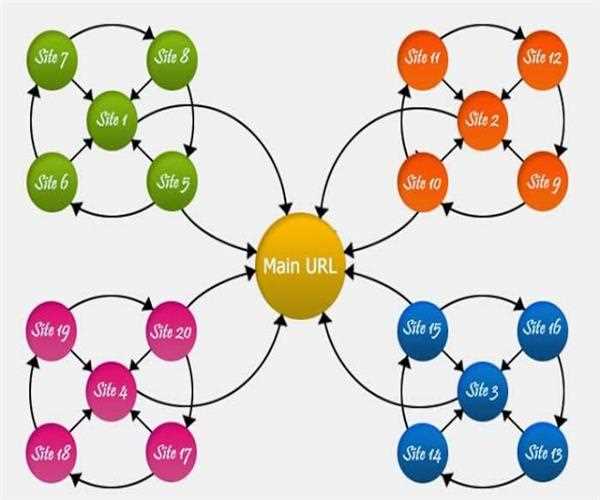Search here

17-Dec-2022
What are the pros and cons of a link wheel in SEO
When it comes to SEO, there are a lot of different strategies out there. Some people swear by link building, while others believe that link wheels are the way to go. So, what’s the difference? And what are the pros and cons of each strategy? In this blog post, we’ll explore the differences between link building and link wheels. We’ll also take a look at the pros and cons of each so that you can make an informed decision about which is right for your SEO strategy.
What is a link wheel?
- A link wheel is a series of interconnected links between websites. The idea is that by linking to each other, the linked websites can share traffic and improve their search engine rankings.
- There are both pros and cons to using a link wheel for SEO purposes. On the plus side, a well-constructed link wheel can help to improve your website's search engine rankings. Additionally, it can help to increase the amount of traffic that your website receives. On the downside, a link wheel can be time-consuming and difficult to set up, and it may not always produce the desired results.
How does a link wheel work?
- A link wheel is a type of search engine optimization (SEO) technique that involves creating a network of links between multiple websites in order to improve the ranking of a target website in search engine results pages (SERPs).
- The basic idea behind a link wheel is that by linking to multiple websites, you can create a 'wheel' of links that all point back to your target website. This effectively creates multiple backlinks to your site, which can help to improve its SEO. In addition, by linking to websites that are themselves high-ranking in SERPs, you can further improve your own site's ranking.
- There are a few different ways to create a link wheel. One common method is to create a blog post on each of the sites in the network, and then link back to the target website in each post. Another method is to create separate web pages on each site that all link back to the target website.
- Link wheels can be an effective SEO tool, but they should be used carefully. Creating too many links between sites can result in search engines penalizing the target website for engaging in manipulative behavior. In addition, if not done correctly, link wheels can look like spam and may actually hurt your site's ranking rather than helping it.
Pros of using a link wheel for SEO
There are many benefits to using a link wheel for SEO purposes. A link wheel can help increase the number of links pointing to your site, which can improve your search engine rankings. Additionally, a link wheel can help build relationships with other websites and promote your site to a wider audience.
Cons of using a link wheel for SEO
- There are a few potential downsides to using a link wheel for SEO purposes. First, if not done correctly, a link wheel can come across as spammy or manipulative to search engines. This can result in your website being penalized or even banned from the search engine altogether. Second, a link wheel requires ongoing maintenance and effort to keep it running smoothly and effectively.
- If you stop working on it, the link wheel will eventually fall apart and stop providing any SEO benefits. Finally, while a link wheel can provide a short-term boost to your website's rankings, it's not a sustainable long-term solution. Once the links in the wheel start to disappear or lose their power, your website's rankings will likely drop as well.
How to create a link wheel
- A link wheel is a type of search engine optimization (SEO) technique that can be used to improve the ranking of a website in search engine results pages (SERPs).
- A link wheel involves creating a network of websites, each of which links to the next, in a 'wheel' shape. The aim is to create multiple inbound links to a website, with each link coming from a different website in the network. This can help to improve the site's ranking in SERPs.
There are some potential advantages and disadvantages of using a link wheel for SEO:
Advantages:
-The main advantage of using a link wheel is that it can help to improve the ranking of a website in SERPs. By creating multiple inbound links from different websites, the link wheel can increase the authority of the site and make it more visible to searchers.
-Another advantage is that link wheels can be relatively easy to set up and manage. Once the initial work is done in creating the network of sites, adding new content and links can be straightforward.
Disadvantages:
-A disadvantage of using link wheels is that they can take some time to set up and get running. Creating and managing multiple websites takes time and effort, and may not be feasible for all businesses.
-Another potential downside is that if not done correctly, link wheels can actually do more harm than good. If Google detects artificial or manipulative linking patterns
Conclusion
There are a few pros and cons to using a link wheel in SEO. On the one hand, it can be an effective way to create backlinks and improve your website's ranking. However, on the other hand, it can also be considered a black hat technique that may get your site penalized by Google. Overall, whether or not you decide to use a link wheel will depend on your own risk tolerance and goals for your website.

SEO and Content Writer
I am Drishan vig. I used to write blogs, articles, and stories in a way that entices the audience. I assure you that consistency, style, and tone must be met while writing the content. Working with the clients like bfc, varthana, ITC hotels, indusind, mumpa, mollydolly etc. has made me realized that writing content is not enough but doing seo is the first thing for it.
Join Our Newsletter
Subscribe to our newsletter to receive emails about new views posts, releases and updates.
Copyright 2010 - 2025 MindStick Software Pvt. Ltd. All Rights Reserved Privacy Policy | Terms & Conditions | Cookie Policy